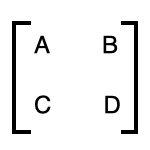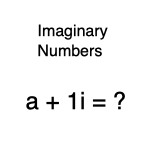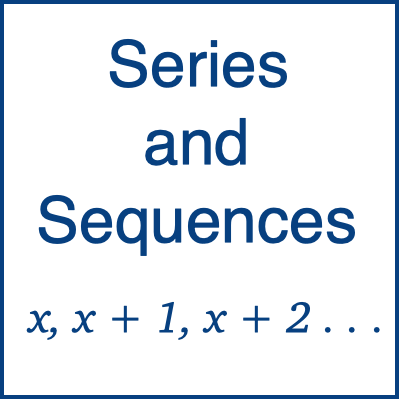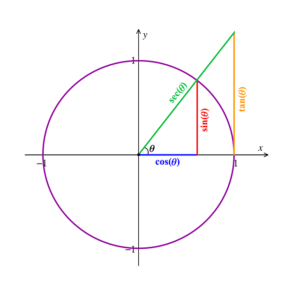If you are looking for ACT math help, you have come to the right place!
This page reviews the skills assessed on the ACT math section. It also provides links to useful exam prep resources.
ACT Math Help – Advanced concepts
The advanced math questions on the ACT examination will include matrix questions (operations with matrices), operations on imaginary numbers, and finding relationships in series and sequences.
Matrix Questions

Students sometimes really struggle with the matrix questions on the math part of the ACT. For these questions on the ACT math test, you might need help to know how to find the determinant of a single matrix. In addition, you might need to know how to perform operations like addition and subtraction with two matrices.
Matrix Example 1:
Find the determinant of the following matrix:

A) jk – mn
B) jk + mn
C) jn – mk
D) jn + mk
E) jm – kn
Answer:
The correct answer is C. In order to find the determinant for a two–by–two matrix, you need to cross multiply and then subtract. So j is multiplied by n to get jn; then m is multiplied by k to get mk; then subtract the second result from the first result to get: jn – mk
Matrix Example 2:
Consider the matrices below.


Matrix A is the first matrix shown above and the second one is Matrix B. What is B – A?
(A)

(B)

(C)

(D)

(E)

Answer:
The correct answer is C. Subtract the numbers of matrix B from the numbers of matrix A that are located in the same position:
- Upper left: –1 – 2 = –3
- Upper right: 7 – 6 = 1
- Lower left: –3 – (–5) = 2
- Lower right: 8 – 1 = 7
Use these numbers to set up the new matrix as your answer:

Other operations on matrices
In the example above, we looked at how to subtract one matrix from another. The same concepts apply, whether you are going to add, subtract, multiply, or divide two matrices.

Addition: Add the numbers of matrix A to the numbers of matrix B that are located in the same position.
Multiplication: Multiply the numbers of matrix B by the those of matrix A that are located in the same position.
Division: Divide the numbers of matrix B into the numbers of matrix A that are located in the same position.
Imaginary Numbers

Questions on imaginary numbers on the ACT math test can also be hard to solve. For these problems on the math exam, you may need help to learn some basic properties and rules about imaginary numbers to answer these types of questions.
Imaginary number sample question 1
For the following equation, i represents an imaginary number. Simplify the equation: (2 – 2i) – (4 – 3i)
A) –2 – 5i
B) –2 – i
C) –2 + i
D) –6 – 5i
E) –6 + i
Answer:
The correct answer is C. Do the operations on the parentheses first:
(2 – 2i) – (4 – 3i) = 2 – 2i – 4 + 3i
Then group the real and imaginary numbers together:
2 – 2i – 4 + 3i =
2 – 4 – 2i + 3i = –2 + i
Imaginary number sample question 2
Consider the imaginary number i, where i2 = –5. What does i + i2 + i3 + i4 equal?
A) –25
B) 25
C) i + 25
D) –4i – 20
E) –4i +20
Answer:
The correct answer is E. Work out each number of the equation individually.
i2 = –5
i3 = i2 × i = –5i
i4 = i2 × i2 = –5 × –5 = 25
Then add the four parts of the equation together:
i + i2 + i3 + i4 =
i + –5 + –5i + 25 =
i – 5i – 5 + 25 = –4i + 20
Sequences and series

You will also need to work with both arithmetic and geometric sequences on the math part of the ACT exam. Have a look at the exercises below to learn how to find patterns in sequences and solve these types of questions.
Sequence example 1
What number is next in the sequence? 7, 14, 21, 28
A) 35
B) 42
C) 49
D) 56
E) 59
Answer:
The correct answer is A. This is an arithmetic series, which can be solved by using basic arithmetic. First, determine whether the relationship between each number and the next by adding or subtracting. In this case, we find the relationship between the numbers by adding 7 to get the next one:
7 + 7 = 14
14 + 7 = 21
21 + 7 = 28
Therefore, we have to add 7 to 28 in order to find the solution:
28 + 7 = 35
Sequence example 2
Consider the number x, where x = –1.
What does x + x 2 + x 3 + . . . x 12 equal?
A) –1
B) 0
C) 1
D) i + 1
E) i – 1
Answer:
The correct answer is B. You will also have geometric sequences on the exam. A geometric sequence can be solved by multiplying one number and the next, or by dividing one number into the previous one. Let’s look at our question again.
If x = –1, then – x2 = 1
x 3 = x 2 × x = –1 × 1 = –1
x 4 = x 2 × x 2 = 1 × 1 = 1
So, a pattern emerges: the numbers with odd exponents in the sequence are equal to –1 and the numbers with even exponents are equal to 1. If we complete the sequence up to x12, we have the following:
–1 + 1 – 1 + 1 – 1 + 1 – 1 + 1 – 1 + 1 – 1 + 1 = 0
More ACT Math Help
Why not try these free exercises?
ACT Math Prep – Free Exercises
ACT Math: Help with Explaining Scoring
The math section of the ACT is scored on a scale of 1-36, like the other ACT sections.
Each subtest is graded on this scale, then your overall score is based on the average of these.
You will also get a sub-score for the mathematics section, which will range from 1 to 18.
ACT Math Help: Explaining the Format of the Exam
There are 60 questions on this part of the test. You will have one hour to complete them.
The questions will get much more difficult as you go along. That is because the easy questions are given first.
You will be allowed to use a calculator, but you will need to know math formulas by heart.
ACT Math Help with Algebra and Trig

The ACT math test covers the math skills most students will have learned through high school.
So, improving your ACT math skills in the following areas will help to increase your score:
pre-algebra, algebra, geometry, trigonometry, and advanced math
ACT Mathematical Reasoning
The ACT Math test will predominantly have word problems and “reasoning” questions.
“Mathematical reasoning” means that you will need to apply your math skills to a context that you aren’t familiar with.
For example, you may be asked to calculate the diameter of a concrete pool that the city is constructing.
Get ACT Math Help with Specific Skills
Students may also want to get help with the following specific skills before they take their ACT math exam:
Number and Quantity Questions
This will include both arithmetic and algebra skills. It will cover your understanding of all kinds of numbers, like integers, rational and irrational numbers, and similar occasionally imaginary numbers.
Besides assessing addition, subtraction, multiplication, and division, the exam will also include exponents, square roots, graphs, polynomials, and quadratics.
Statistics and Probability
These types of questions deal with taking and measuring data.
You my need to work with bar charts, tables, line graphs or pictographs for this part of the test.
Geometry
You will need to know all of the triangle laws; properties of circles, such as radius, diameter, circumference and area; area and perimeter of squares and rectangles, hybrid shapes, and the volume of 3-D figures.
Algebra
For these types of questions, you will see matrices, polynomials, and linear equations and expressions.
Functions
These questions usually involve graphing concepts and variables. There will often be a dependent variable and and independent variable. You may also need to know function notation.
Note:
The ACT and American College Test are trademarks of ACT Inc., which is neither affiliated with nor endorses this website.